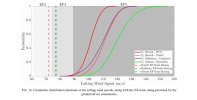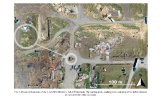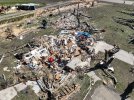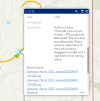I believe that based on Connell Miller's method, far more tornadoes than those discussed above could be included in the EF5 discussion list. Note that his cases include the 2020 Scarth MB tornado, which threw an SUV 30-50 meters away, yielding a median wind speed of 119 m/s through the Monte Carlo method—the same as the wind speed calculated for the Enderlin tornado. I can think of hundreds of similar cases, as throwing vehicles 50-100 meters is not uncommon and is not exclusive to EF4+ tornadoes.
View attachment 47035
However, it’s also worth noting that the 2023 Dibsbury AB tornado threw a 9.8-ton combine harvester approximately 80-100 meters, resulting in a wind speed of 119 m/s via the Monte Carlo method—identical to the Enderlin tornado. Yet, the damage to nearby houses only corresponded to a 170 mph (76 m/s) wind speed, which seems contradictory.
View attachment 47034
View attachment 47036
View attachment 47037
There are two possible explanations for this. First, as many have already pointed out, this method only considers horizontal wind speed, and the lift coefficient accounts solely for the Bernoulli effect generated by strong horizontal winds. In reality, tornadoes have significant vertical wind speeds, which could lead to an overestimation of wind speeds using this method. However, the EF scale does not define vertical wind speeds for tornadoes, so this method aligns well with the EF scale’s framework.
The second possibility is that the wind speed corresponding to the house destruction was underestimated. In fact, calculating the wind speed required to destroy a house is more challenging than calculating the wind needed to throw an object, as a house is a composite structure rather than a single solid object. Therefore, this possibility is entirely plausible.





